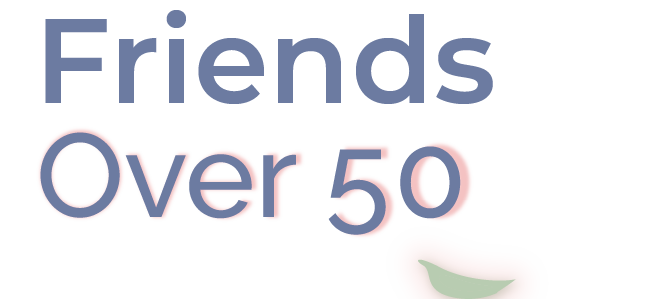Disclosure: Friends Over 50 participates in affiliate programs, meaning I may earn a commission at no extra cost to you. Learn more.
Leo Tolstoy’s War and Peace is not just a novel—it’s an exploration of life’s big questions, wrapped up in history, drama, and deep insights into human nature. As you know, I’m doing a slow read of this famously huge book, taking my time to soak in each scene and reflect on what it means for us today. You can read my first post introducing this slow-read project here. I’ve now reached about a quarter of the way through, and I’m excited to share my thoughts with you.
Navigating the Complexities of Tolstoy’s World
From glamorous parties in St. Petersburg to gritty, chaotic battles during the Napoleonic Wars, Tolstoy paints an incredibly vivid picture of nineteenth-century Russia. I admit I slogged through the first few chapters and was concerned the story would be overwhelmed by the dozens of characters and complicated Russian names. But I quickly settled into this relatable story.
Favorite Characters and Personal Reflections
One of my favorite characters so far is Pierre Bezukhov. Pierre is a rich, somewhat awkward young man who inherits a fortune overnight, plunging him into high society. He’s idealistic, sincere, and often confused about what he wants from life—someone many of us can see a little bit of ourselves in, especially when we’re navigating changes or big decisions. Pierre’s journey feels especially relevant today as we try to find authentic meaning in a world often filled with superficial appearances and social media facades.
Another compelling figure is Prince Andrei Bolkonsky. Initially driven by ambition and dreams of military glory, Andrei’s experiences on the battlefield quickly challenge his worldview. Tolstoy’s battle scenes, especially at the Battle of Austerlitz, are gripping and chaotic, stripping away any romantic notions about war. Instead of glory, we see randomness, confusion, and deep human tragedy. When I watch news updates on various global conflicts, I can’t help but think our world leaders should be forced to read Prince Andrei’s account of war before making any decisions to pursue military force.
Contrasts and Connections
Tolstoy excels at showing contrasts: between the glittering, superficial lives of the aristocracy and the stark realities faced by ordinary people, especially soldiers and Russian peasants. His writing style, with its short sections, makes this otherwise intimidating book feel manageable, almost like episodes of a dramatic TV series rather than a dense historical novel. This approachable style is perfect for our slow read journey and makes the grand themes of life, fate, and purpose feel relatable rather than overwhelming.
Women in Tolstoy’s Russia
I’m especially drawn to how Tolstoy portrays his female characters. Natasha Rostova, with her lively spirit and impulsiveness, provides a genuine contrast to the rigid expectations of her society. Princess Marya Bolkonskaya, quiet yet deeply thoughtful, reveals the pressures women faced—and still face—in balancing societal roles, personal desires, and family obligations. Their stories highlight universal challenges women navigate across generations.
The Power of Ordinary People
One of Tolstoy’s biggest ideas is that history isn’t just shaped by a few “great men” like Napoleon, but by countless small actions from ordinary people. This theme challenges us to think about our own roles today, whether it’s our choices as family members, our contributions to society, or how we participate in historical events unfolding around us. Tolstoy argues that individual free will and collective action hold equal power in shaping history—something that feels particularly important in our interconnected and often chaotic world.
Searching for Deeper Meaning
Pierre’s personal journey into philosophical musings and his quest for spiritual meaning mirrors many of our own experiences. Like Pierre, many of us today are looking beyond financial success and social status for deeper meaning in life. His search speaks directly to our modern anxieties about living authentically and finding happiness amid technological advancements and social pressures.
Timeless Themes of Inequality
Tolstoy also boldly critiques wealth inequality and privilege—topics as pressing today as they were then. The stark contrast he paints between the lavish lifestyles of Russian aristocrats and the humble lives of peasants resonates strongly with ongoing conversations about financial inequality and social justice.
A Book Worth the Effort
Despite its length, War and Peace remains surprisingly accessible and enjoyable, especially with the slow-read approach. Tolstoy’s vivid descriptions and thoughtful character development turn what could be intimidating into something deeply engaging. The novel encourages reflection on the timeless aspects of human life, relationships, and the pursuit of meaning.
Now that I’m at Book 2, Part 2, Chapter 8, I’ve grown deeply invested in the lives of Tolstoy’s characters. Each section has sparked thoughts about my own life, relationships, and society around me. Tolstoy’s insights into human nature and his questions about fate, history, and happiness continue to resonate strongly.
As we continue this slow read together, I’d love to know—what aspects of Tolstoy’s world resonate with you most? Which characters reflect your own experiences, questions, or struggles? Let’s continue this journey together, exploring what timeless wisdom War and Peace has to offer us in 2025.

